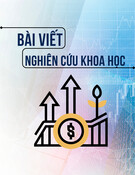
Role of Tourism in Global Economic Integration
Ola Bazaza, Pharm., Pharm. MBA
Beirut, Lebanon- Beirut Arab University, Faculty of Business Administration,
doctorate in business administration
Oi.bazaza@hotmail.com
Abstract. Tourism is considered as one of the major components in the economy, since it
increases job creation, enhance the social level, decrease poverty and increases the opportunities
for entrepreneurs to prove their skills especially women (Caroline Ashley) . Having an integrated
economy where borders are removed, tourism is more facilitated and those countries would
benefit economically, where the number of tourists increase. As we can see that the EU region
is considered the first destination for tourism, in addition to the nature landscape, having an
integrated economy, sharing a single market played a major role in increasing this tourism trips,
especially that most tourists are from Europe. Tourism is very important in Lebanon and should
be developed, through building a good image, create linkages between different sectors, taking
into consideration that we can get short term or long term results accordingly.
Keywords. Tourism, Global economic integration, Lebanon, European union
Introduction
Tourism
Many countries consider tourism a crucial economic component, due its positive
effects on economy. Tourism increases job offers and availability directly in hotels, restaurants,
stores and transportation, and indirectly through other products and services that support
tourism (agriculture, industry, ecology, etc.). This creation for new opportunities would
increase the income for the workforce and which would increase the standard of living for local
population. Tourist destination would bring good revenues paid as taxes and fees from the
companies working in this field. In addition, to the increase in local products exportation, it is
estimated to have 15-20% of tourists expenditure spent on gifts, clothes and souvenirs. Tourism
increase depending on the degree of infrastructure development, private investors, the economic
development level, and destination marketing ability (Bunghez, 2016 ). There are several types
of tourism, affecting the global economy accordingly, for example business tourism, medical
tourism and pilgrimage. These different types activate different sectors and offers different job
opportunities.
61
Technium Social Sciences Journal
Vol. 5, 61-69, March 2020
ISSN: 2668-7798
www.techniumscience.com

Figure 1: labor market Dynamics in South Africa
Taking South Africa as an example, we can see in figure 1, tourism has exceeded
agriculture, trade and construction sectors in creating different and additional jobs in 2014
compared with 2008, so that tourism showed improvement and growth and this would be
reflected on the national economy (Statistics South Africa, 2016).
Getting more into details, tourism offers not only a high number of new job
opportunities yet it offers different and varied types of jobs. As we can see in figure 2, tourism
participates in different fields’ enhancement, mostly food services and drinking places, clothing
stores, accommodation services etc… (Patterns, 2013)
Figure 2: total employment in tourism
62
Technium Social Sciences Journal
Vol. 5, 61-69, March 2020
ISSN: 2668-7798
www.techniumscience.com

Integrated economy:
To ensure the economic development in any country, tariff and non-tariff barriers to
the free flow of goods or services and factors of production among each other’s should be
reduced or eliminated, in addition to the agreements between countries to coordinate their trade,
fiscal, and monetary policies should be taken into consideration, this is what we call economic
integration. Economic integration has different stages starting from free trade area, in which
countries agree on eliminating tariffs on most goods traded between them. The next stage is
customs union, in which tariffs are unified on the external border of the union. Stage three is
establishing common market and it is characterized by the unification of economic policies, the
goal is to facilitate the movement of capital, labor, goods, and services between them easily
forming a single market with many advantages such as, allocating resources efficiently
increasing productivity and competitiveness which makes the formation of monopolies more
difficult, where efficient firms can benefit form economies of scale and customers can get their
products with lower prices with variety of choices and new innovative ones. The fourth stage
is economic and monetary union, where a group of countries share the same currency. Finally,
the last stage is complete economic integration, where the integrated units have no control over
economic policies with full monetary union (Yuri Kirillov, 2015 ).
Globalization has affected every field of social life. Global economy was affected with
globalization in different ways such as, liberalization of international trade, competition, free
movement of capital and work force, investments, removing any barrier for capital, goods,
financial and investment flows. Tourism is considered one of the most important economic
activity in this process, so that the development of tourism is seen in every dimension in
globalization; economic, social, cultural and even political. The effect of globalization on
tourism is characterized by the progress and transfer of technology, open borders, travelers’
transportation which became cheaper (air travel cost is decreasing) due to the reduction in the
intermediaries importance) and communication which became fast and easier. This decrease in
the cost would increase the number of people that can afford enjoying tourism inside and
outside borders. Tourism results in an economic development due to the fact that tourism
connect the sales of services and goods, every sale have a significant effect on small businesses.
This influence of globalization on tourism is reflected by the fact that the number of tourists is
increasing on yearly basis. (Slobodan Cerovic, 2015).
Effect of Tourism on Economic Growth
The total impact of tourism on economy is impressive. In 2017, tourism represented a
total on 10.4% from the global GDP which is approximately equal to 8.2 trillion dollars and
offered 313 million job opportunities and it represented 4.5% of total investment. It is expected
that in 2022 it will exceed these numbers (Scowsill, MARCH 2018). It is considered the fourth
export industry after fuel, chemicals and food. (F. Balli, 2015). The level of the effect of tourism
on economic growth varies according to each country, such that the relation between tourism
and economic growth is bidirectional causality, examples; Taiwan and Korea whereas this
relation differs in Turkey since it is unidirectional causality (L. Gunduz, 2005).
This economic stimulation is due to first, the contribution of foreign exchange reserve
supporting the production process through new technologies. Second, tourism increases the
investment in infrastructure and human capital (A. Lemmetyinen, 2009). Third, industrial
development is stimulated by tourism due to the spillover effect and consequently creates jobs
and increases earnings, finally creating positive economic externalities.
Tourism reduces the levels of poverty, through three different ways, first through
increasing wages and outcomes giving the chance for unskilled or semi-skilled labor to work
63
Technium Social Sciences Journal
Vol. 5, 61-69, March 2020
ISSN: 2668-7798
www.techniumscience.com

(such as taxi drivers, guides..) in urban or rural areas accordingly examples Cappadocia and
Istanbul and thus creating opportunities and chances for poor people to work, through creating
new fields such as handcrafts, cultural tourism. (Caroline Ashley). Tourism encourage
entrepreneurs to prove their skills as they would have a wider market, and higher opportunity
to succeed. Second, to complete the value chain of tourism, in order to meet the needs of tourists
and gives distinctive services to maintain the level of tourism in a specific country, other sectors
should be dedicated to reach this desirable outcomes, through offering the best quality of food
and beverages, furniture, construction, and transportation. Up to half of total poor people in
Namibia and Luang Prabang in Laos (Southeast Asia) works differently in tourism supply
chain, distributed among different fields such as accommodation and transportation, bars and
restaurants, handicrafts, food production, infrastructure and waste disposable, all these roles are
supportive to a successful tourism (Richard Tapper, 2004)
Finally, the dynamic effects caused by tourism; and it is characterized by small
enterprises development, increase in the demand on hand crafts produced by women in the
informal sector and consequently the purchasing power will increase (Caroline Ashley). The
level of impact differs according to the host company, supply side factors, government policies,
the type of tourism (medical, business…), and tourism companies’ business practice.
As we can see in figure 1, the level of job opportunities offered because of tourism increased
between 2008 and 2018 and it is expected to reach 11.6% of total employment by the end of
2028.
Figure 3: Direct contribution of tourism to employment
64
Technium Social Sciences Journal
Vol. 5, 61-69, March 2020
ISSN: 2668-7798
www.techniumscience.com

Tourism in European Union
Economic globalization main value is to release business and allow national economic
competitiveness to reach integration into global markets. Societies that adapted these changes
have benefited from this process and worked passively through entering regional economic
integration as they protected their economy against global competition through relying on
different economic potentials and gaining various resources from different economic regional
integrations. This integration can help developing countries to enter the global field. In this case
investments in the region would increase, enhancing the economic growth and development
through increased mutual capital volume. The first step in moving towards globalization is
through regional integrations in which countries can overcome world’s financial crisis.
The main advantage in this integration is to remove barriers and obstacles, and
facilitate business formation and economic enhancement through reduced taxes, simplified
tourism (as discussed before how tourism could support national economy, removing barriers
would enhance its role). The goal of this integration is to increase the global production and
specifically the specialized domestic production and obtain exchange revenues, this would
decrease the regional expenses, conserve domestic resources, distribute optimum outcomes,
enhance efficient production and business, encourage foreign investments and exploit
comparative advantages (Mehdi Hosseiny Naveh, 2012). Economic integration can be applied
after economic, political and institutional cooperation. Economic integration has two levels,
first include; economic, political, historical, cultural and social, whereas the second levels has
economic, financial, monetary etc. The European Union was successful because it combined
the cooperation and the integration from which it was capable of developing a rigorous but
flexible approach. The process of any economic integration have the same steps but different
starting points; such that the integration between industrialized countries has a developed
frameworks but the integration between developing countries should ensure those (Koné,
2012).
European Union
The most famous union that has applied economic integration is the European Union
(EU). EU began with a cooperation in trade and economy, and it was called European
community in 1958, and more countries started to join this union and in 1993 the community
became European Union with 28 European countries. The main goals for this union are;
ensure development based on economic growth, competitive markets, social progress,
environmental protection, technological progress, and establish economic and monetary union
sharing the same currency “euro”.
The impact of the EU was reflected through achieving a peaceful environment for
more than half a century, it raised the level of living standards. People can travel throughout
most of continent without borders. They share a single market so that people, goods, services,
and money move freely among different countries in the EU, ending up to become the largest
trade bloc and the biggest exporter (www.europa.eu.com, n.d.).
Europe is number one tourist destination with a 50% of the world’s tourist arrival and
this high tourism percentage helped Europe to have economic growth. As we can see in figure
2, the increased levels of EU tourism reflects on increased levels of income which will lead to
economic growth (European Union Tourism Trends, 2018).
65
Technium Social Sciences Journal
Vol. 5, 61-69, March 2020
ISSN: 2668-7798
www.techniumscience.com




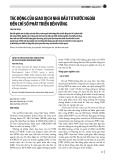

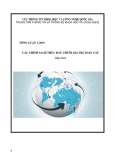
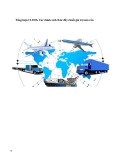
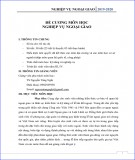
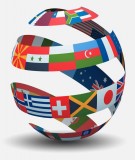

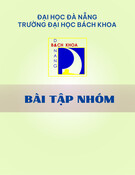
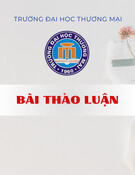





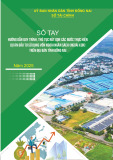
![20 câu hỏi Quản lý dự án phần mềm có đáp án [mới nhất]](https://cdn.tailieu.vn/images/document/thumbnail/2025/20251003/hieu2004haha@gmail.com/135x160/78791759734259.jpg)
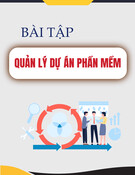

![Tài liệu Quản lý dự án: Kiến thức nền tảng toàn diện [chuẩn SEO]](https://cdn.tailieu.vn/images/document/thumbnail/2025/20250910/kimphuong1001/135x160/92631757496585.jpg)


